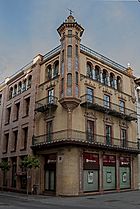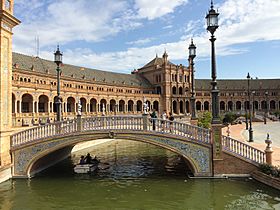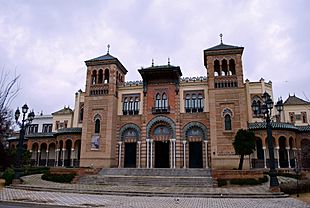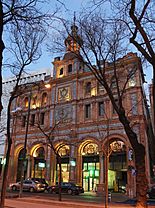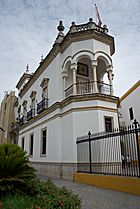Aníbal González Álvarez-Ossorio facts for kids
Quick facts for kids
Aníbal González Álvarez-Ossorio
|
|
|---|---|
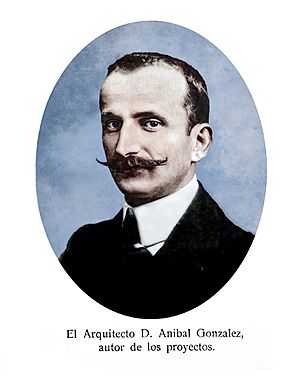 |
|
| Born | 10 June 1876 Seville, Spain
|
| Died | 31 May 1929 (aged 52) Seville, Spain
|
| Nationality | Spanish |
| Occupation | Architect |
| Buildings | Plaza de España, Museum of Arts and Traditions of Sevilla, Archeological Museum of Seville |
Aníbal González Álvarez-Ossorio (born June 10, 1876, died May 31, 1929) was a famous Spanish architect. He designed many important buildings in cities like Seville and Madrid. One of his most well-known creations is the beautiful Plaza de España in Seville. He was also the main architect for a big event called the Ibero-American Exposition of 1929.
Aníbal González was born in Seville, Spain. He went to a special school in Madrid to study architecture. He finished his studies in 1902. When he first started designing, his buildings looked like the Art Deco style. Later, his style changed to something called "regionalism." This means his designs started to use ideas and looks from the local area.
Designing the Ibero-American Exposition
Aníbal González became the chief architect for the Ibero-American Exposition of 1929 in Seville. This was a huge international fair. He worked on it until 1926. He designed several important buildings for the Exposition.
These buildings are located in the Maria Luisa Park. Some of them include:
- The Mudéjar Pavilion, finished in 1914. Today, this building is the Museum of Arts and Traditions of Sevilla.
- The Palacio del Renacimiento. This building is now the Archeological Museum of Seville.
- The Real Pavilion.
The Amazing Plaza de España
Aníbal González's most famous work for the Exposition is the Plaza de España. It was finished in 1929, just in time for the big event. This plaza became the most important symbol of the Exposition.
The Plaza de España is a huge, half-circle shaped complex. Buildings run all around its edge. You can cross a moat to reach the buildings using many beautiful bridges. In the middle of the plaza, there is a large fountain. Along the walls of the plaza, you'll find many special tiled areas. Each of these areas represents a different province of Spain.
González mixed different styles when he designed the Plaza de España. He used some ideas from the 1920s Art Deco style. He also used "mock Mudéjar" and Neo-Mudéjar styles. These styles are inspired by old Spanish and Islamic art and architecture.
See also
 In Spanish: Aníbal González Álvarez-Ossorio para niños
In Spanish: Aníbal González Álvarez-Ossorio para niños



